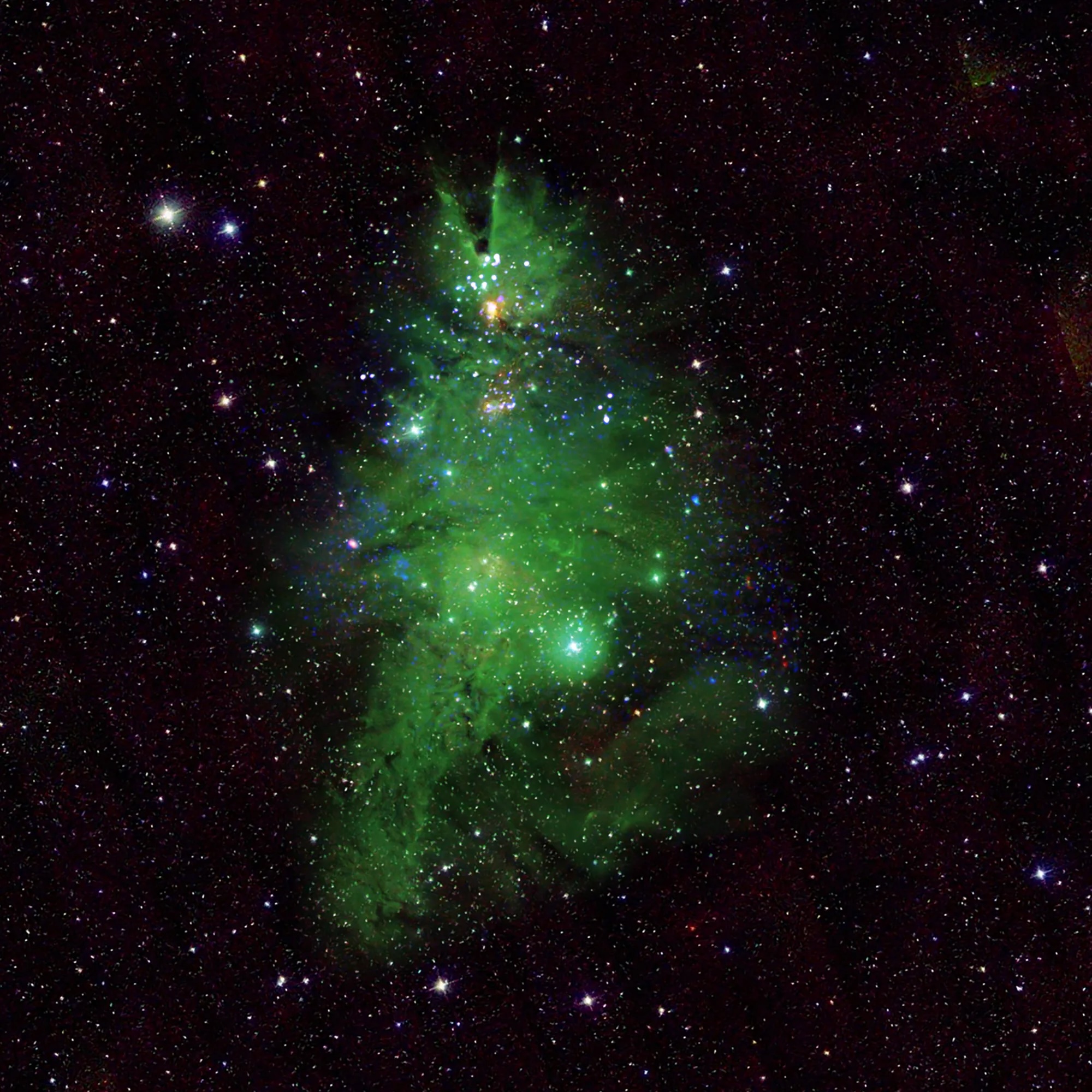Just in time for the holidays, a new composite image of the Christmas Tree Cluster (NGC 2264) has been released. This image is a group effort: the blue and white stars in the cluster giving off X-rays are seen by Chandra, while the faint green nebula was imaged by the WIYN 0.9-meter telescope on Kitt Peak.
NGC 2264 is a cluster of young stars about 2,500 light-years from Earth with ages between one and five million years old, ranging in mass from greater than the Sun to 1/10th a solar mass.
To show the Christmas Tree shape us humans are familiar with, this image has been rotated clockwise by about 160 degrees from the astronomer’s standard of North pointing upward. That way, it appears as though the top of the tree is toward the top of the image.
NASA points out that the ‘green’ of the tree comes from the gas in the nebula, which is from the optical data as seen by the WIYN telescope. The bright yellow regions are areas of dense stars. But the Christmas tree also has flickering, colorful lights found within it. The blue and white lights (which blink in the animated version of this image, below) are young stars that give off X-rays. However, the coordinated blinking variations are not what you’d see in space. The artificial blinking lights were added to emphasize the locations of the stars.
The WIYN Observatory is a 3.5-meter telescope atop Kitt Peak National Observatory in Southern Arizona. It is owned and operated by the a consortium of several public and private universities. The Chandra X-ray Observatory launched in 1999 and is part of NASA’s ?eet of “Great Observatories” along with the Hubble Space Telescope, the Spitzer Space Telescope (retired in 2020) and the now deorbited Compton Gamma Ray Observatory. Chandra allows scientists from around the world to obtain X-ray images of exotic environments in space to help understand the structure and evolution of the Universe.
Below is another colorful view of NGC 2264, which is not rotated, but includes the sparkling blue baubles. This bright red version of the Christmas Tree cluster — as well as the Cone Nebula at the bottom — was created from data taken through four different filters (B, V, R and H-alpha) with the Wide Field Imager at ESO’s La Silla Observatory, 2,400 meters high in the Atacama Desert of Chile in the foothills of the Andes. This image shows a region of space about 30 light-years across.


